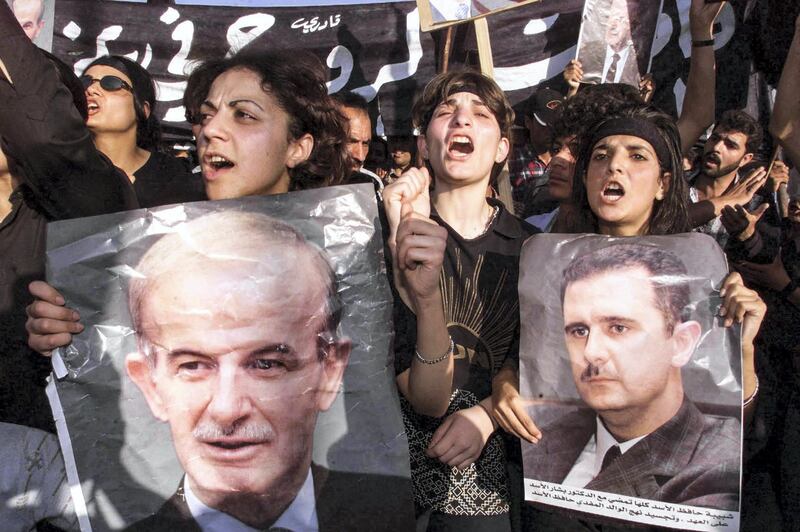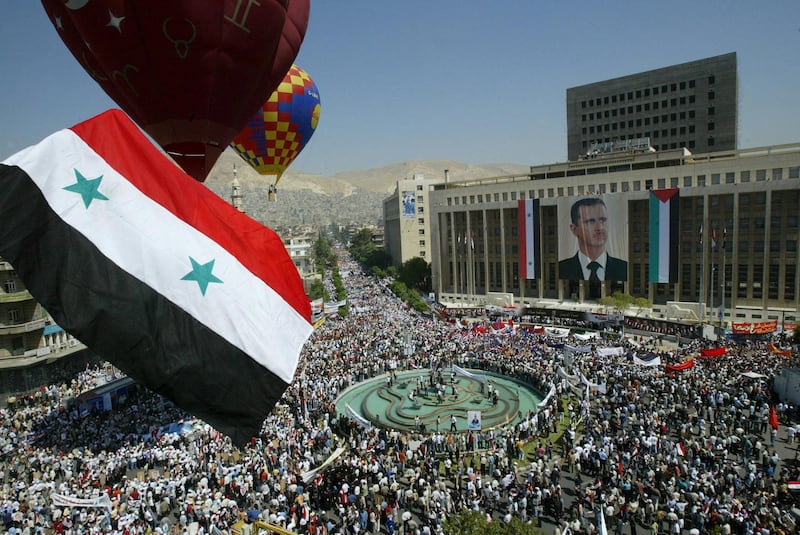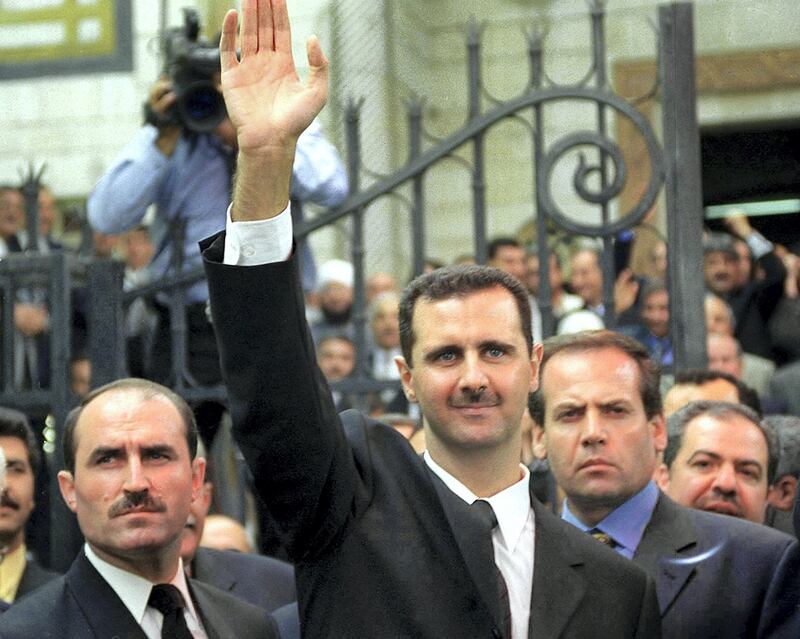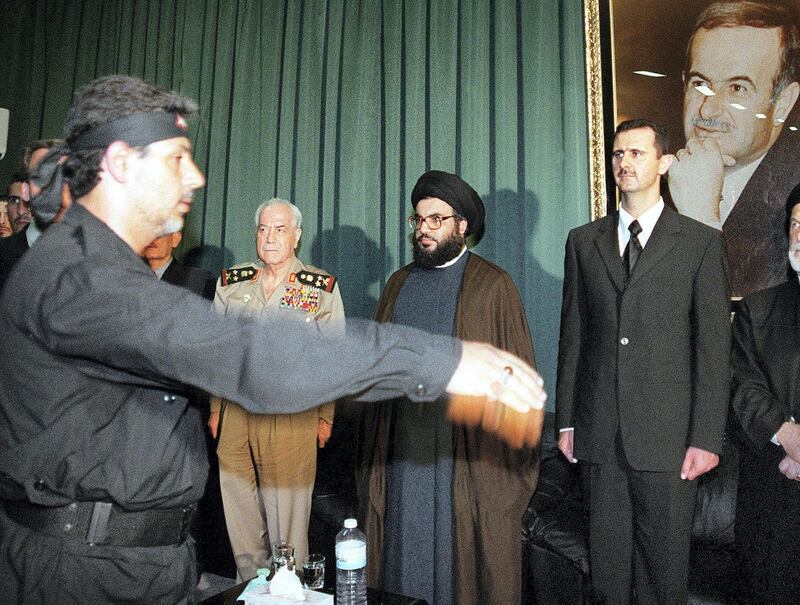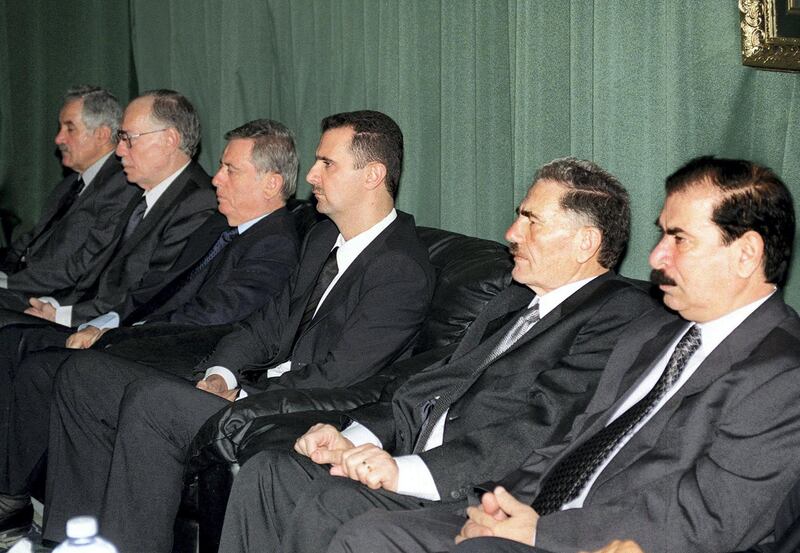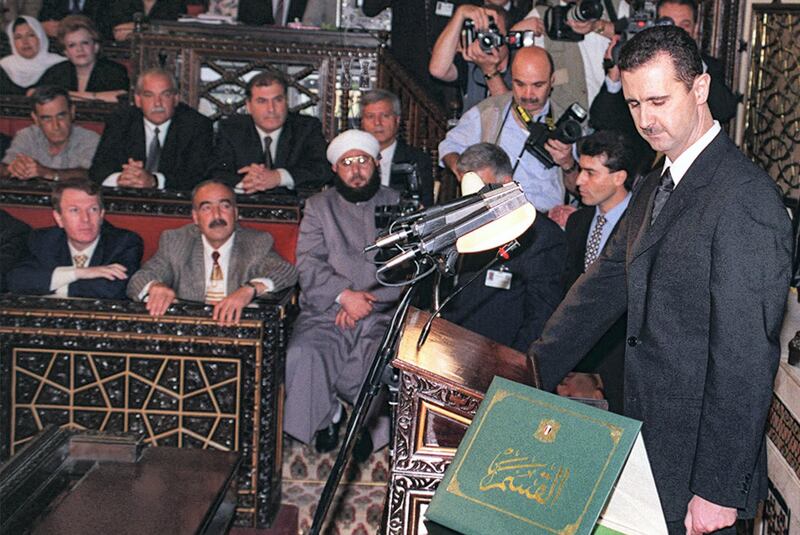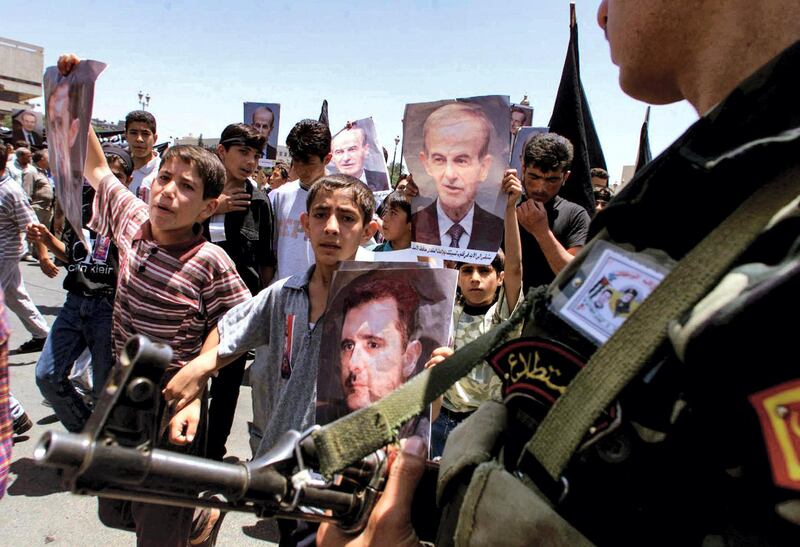With President Bashar Al Assad almost certain to hold on to power in Wednesday’s election, Syria will have been ruled for more than five decades by the same family.
1970: Hafez takes charge
Hafez Al Assad, Syria’s defence minister and the father of Bashar, takes power in a military coup on November 16, 1970 that ousts president Nureddin Al Atassi.
Mr Assad, who leads the pan-Arab nationalist Baath party, is elected president on March 12, 1971. He is the only candidate.
He is Syria’s first head of state from the Alawite sect of Shiite Islam. The minority makes up 10 per cent of the population.
1973: War with Israel
Egypt and Syria launch a surprise attack on Israel on October 6, 1973 in a bid to win back territories they lost in the 1967 Middle East War, but they are pushed back.
A disengagement agreement for the Golan Heights – formerly held by Syria – is signed in May 1974, officially ending the war.
1976: Lebanon intervention
A month later, US president Richard Nixon visits Damascus and announces the re-establishment of diplomatic relations with Syria, which have been frozen since 1967.
Two years later, Syrian troops intervene in the Lebanese civil war, with US approval, after an appeal by embattled Christian forces.
For three decades, Damascus will be a dominant military and political force in Lebanon.
1982: Brutal repression
The Syrian regime viciously cracks down on an armed uprising by the Muslim Brotherhood in the city of Hama in February 1982. Between 10,000 and 40,000 people die.
The Brotherhood have been previously accused of a 1979 attack in which 80 military cadets, all Alawite, were killed in a hail of gunfire and grenades at their academy in Aleppo.
Courting the West
Syria’s ties with the US begin to thaw in 1990-1991, following the collapse of the Soviet Union, with which Damascus a decade earlier had signed a Treaty of Friendship and Co-operation.
After Iraq’s invasion of Kuwait, Syria joins the multinational forces in the US-led coalition against Saddam Hussein.
2000: Son Bashar takes over
Hafez Al Assad dies on June 10, 2000, at the age of 69. A month later, his son Bashar becomes Syria’s new head of state, winning a referendum with 97 per cent of the vote. Again, he is the only candidate.
In September that year, 100 intellectuals call for the lifting of martial law, more freedom and political pluralism. It becomes known as the “Damascus Spring”.
But the period of apparent openness is short-lived. Mr Assad’s government cracks down on dissent and arrests 10 opponents in July 2001.
2011: Arab Spring
A decade later, the Arab uprisings against autocratic rulers in the Middle East arrive in Syria. Protests break out in March calling for civil liberties and the release of political prisoners.
Brutally repressed by the regime, the demonstrations turn into a devastating war, with several regional and international powers, and extremist groups, getting involved.
Decade-long war
With huge military support from Iran and Russia, the Assad regime has ground out a string of military victories in recent years and regained about two thirds of Syria.
The war has claimed more than 388,000 lives and about 12 million people have been displaced or forced into exile. It has caused massive destruction and battered the country’s economy.
Protests in Idlib as Syria marks 10 years of civil war
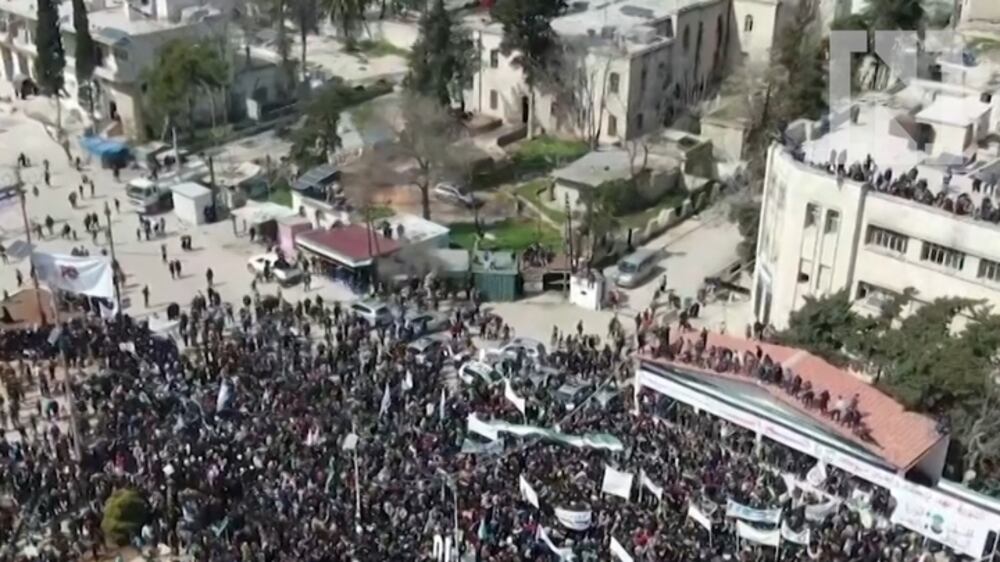
Read more on Syria:
[ Syrian families released from Al Hol struggle for acceptance after ISIS trauma ]
[ Alawite divisions exposed in Syria as powerful road-rage killer walks free ]
